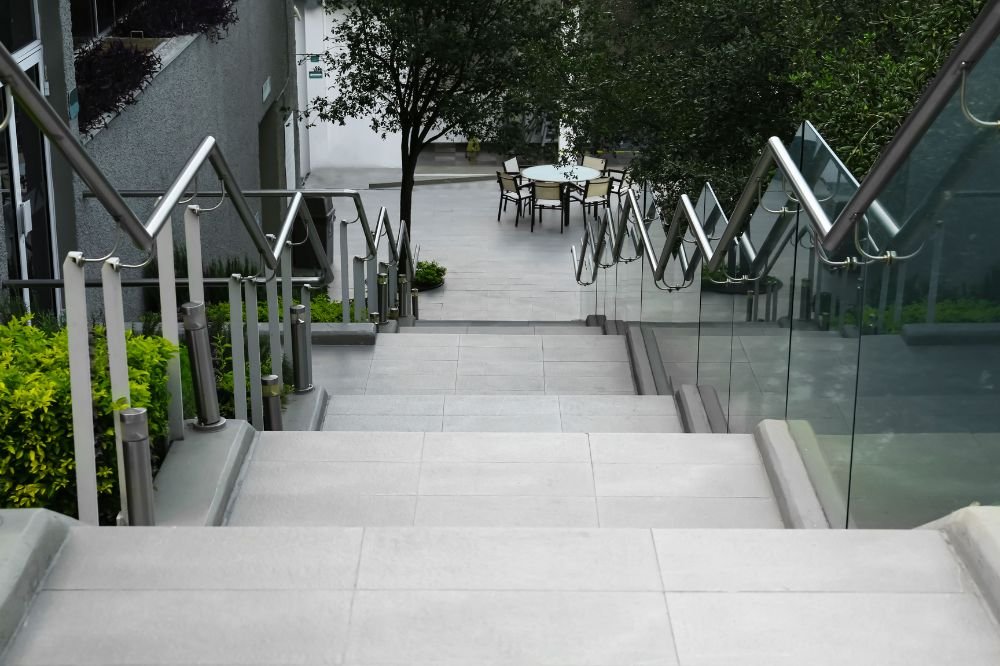How Metal Handrails Improve Safety on Staircases and Ramps
Stairs and ramps are an unavoidable feature of residential and commercial buildings, providing a way to move from one level to the next. While useful, they can also pose a hazard, especially to individuals with mobility problems, children, and the elderly. One of the most effective ways to render stairs and ramps less hazardous is to install metal handrails.
Metal handrails offer stability, stop falls, and are an important source of support for users who are negotiating changes in level. Metal handrails are also durable and resistant to most environmental conditions, making them a long-lasting safety solution for domestic, commercial, and public environments. This blog explores the key ways in which metal handrails improve the safety of stairs and ramps.
1. Preventing Slips and Falls
Staircase accidents are one of the most common household and workplace accidents. Whether caused by a slip, loss of balance, or misstep, they can lead to serious injuries. Metal handrails offer a solid point to hold onto, enabling people to maintain their balance while ascending or descending stairs.
On ramps, especially for wheelchairs, people with mobility aids, or individuals who push heavy items, handrails provide extra support. They help users balance and avoid accidents that could be caused by sudden movements or external factors like rain or snow.
2. Stability to All Users
People with limited mobility, such as the elderly or those recovering from injuries, require additional support when they are walking up or down stairs or ramps. Metal handrails offer a solid guide, enabling them to feel secure and less reliant on others to support them.
Handrails also help young children, who may not yet have full control of their movements, and individuals with visual impairments who utilize handrails to guide them in moving safely. A well-placed handrail allows ramps and stairways to be more accessible for all individuals to use.
3. Enhancing Accessibility and Compliance
with Safety Regulations
The majority of local and national building codes, as well as the Americans with Disabilities Act (ADA), require handrails for stairs and ramps for accessibility by individuals with disabilities. Metal handrails are a suitable choice for meeting these requirements because they can be designed and installed to accommodate the required height, strength, and gripping diameter.
For example, ADA stipulates that handrails should be 34 to 38 inches high and should extend beyond the top and bottom of stairs and ramps for enhanced usability. Properly installed handrails render buildings accessible and safe for all visitors.
4. Improving Visibility and Orientation
Handrails in dimly lit areas or in multi-story buildings serve as a visual indicator for people moving from floor to floor. Brightly colored handrails or those constructed from reflective metal can also facilitate visibility, making stairs and ramps easier to use in poorly lit conditions.
In public facilities, robust handrails also direct traffic, helping to channel movement and prevent congestion in areas of heavy use. This orderly flow reduces crowding and minimizes the risk of accidental collisions on stairs.
5. Improving Durability and Safety in
Extreme Conditions
Unlike wood or plastic, metal handrails are very robust and wear-and-tear resistant, making them ideal for both indoor and outdoor use. Their durability ensures that they are long-lasting safety features that can even resist heavy usage or harsh weather conditions.
In external staircases and ramps, temperature and moisture exposure can compromise other materials. Metal handrails, especially those made of stainless steel or powder-coated iron, are rust-resistant and weatherproof, providing long-term safety with no requirement for ongoing replacements.
6. Reducing Fatigue and Assisting in
Climbing
Climbing stairs can be taxing, especially for the aged or people carrying a load. Handrails provide a point to leverage one's strength, relieving the legs and minimizing fatigue.
For users of ramps, handrails offer controlled movements, allowing users to pace themselves safely when ascending or descending. The additional support relieves joints and muscles from pressure, making movement more comfortable and secure.
7. Facilitating Emergency Evacuations
In the event of emergencies such as fires or power outages, people must evacuate quickly and safely. Handrails act as an essential support in these situations, particularly in smoky or poorly visible environments. Metal handrails do not deteriorate in extreme circumstances and can therefore be trusted when most required.
Buildings with firm handrails give the users an additional sense of security, knowing that they have a stable grip to support them during emergency evacuations.
8. Enabling Proper Use of Stairs and
Ramps
Handrails naturally encourage individuals to use stairs and ramps correctly and carefully. With a support mechanism available, people are more likely to hold the rail and maintain upright stance when ascending or descending. This is especially helpful in public spaces, schools, and hospitals, where staircases and ramps are utilized by a broad range of people—from kids to the elderly—daily. By guiding users to walk safely, metal handrails play a crucial role in averting accidents.
Conclusion
Safety should always be a top priority in ramp and staircase design, and metal handrails are a simple yet highly effective way of adding stability, accessibility, and accident prevention. Their strength, longevity, and compliance with safety codes make them a good investment for the home, workplace, or public space. At Precision Ornamental Welding, we understand the importance of well-designed metal handrails in providing safety and assistance. Whether for residential or commercial use, quality handrails ensure more secure and accessible spaces for everyone.
